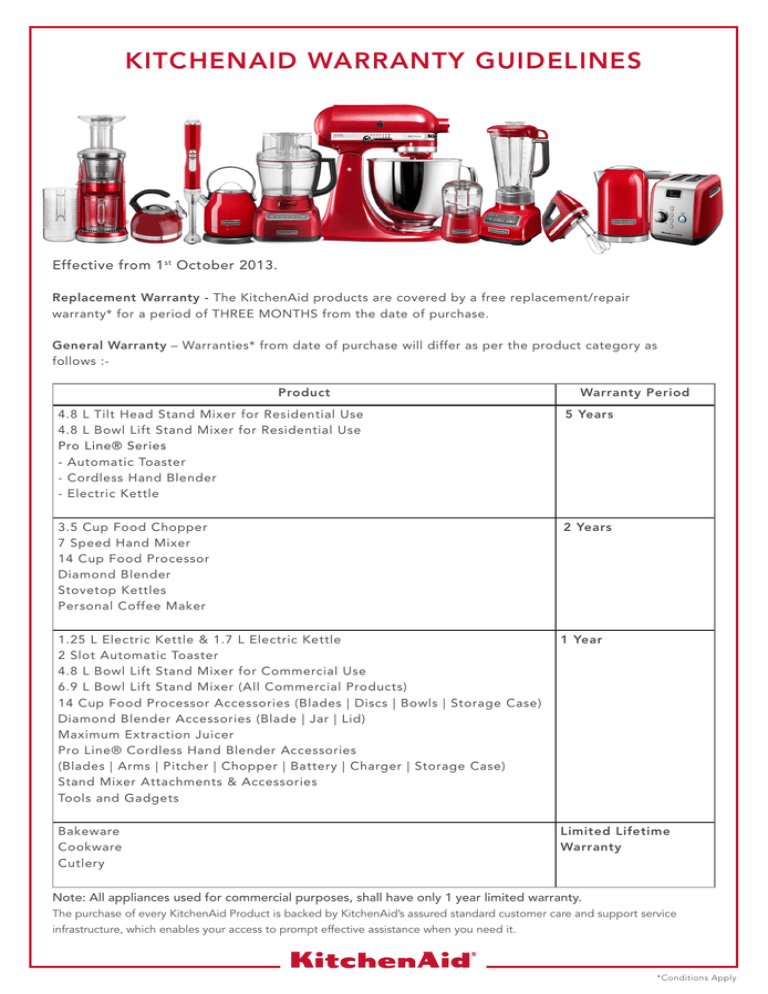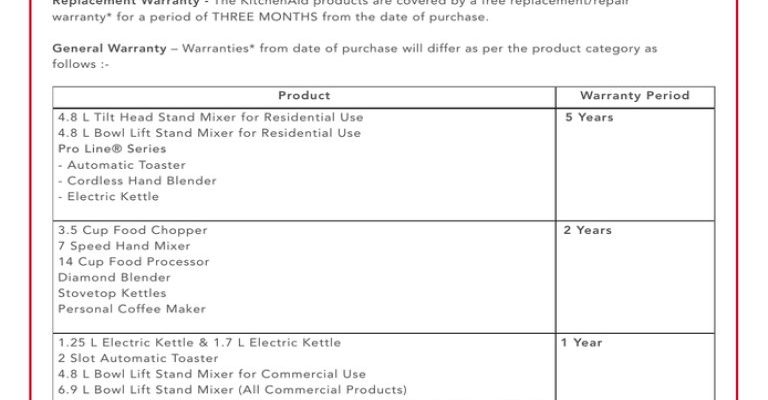
Imagine your oven as a trusty companion in your kitchen adventures, but like all companions, sometimes it needs a quick tune-up or fix. When you register your warranty, it’s kind of like giving the manufacturer a heads-up about your appliance’s “official home.” That way, if anything goes sideways, you don’t just have a random stranger on the line—you have a support system ready to jump in. But is it just a formality, or can it actually make a difference when you’re standing there with an oven that won’t heat and a deadline for dinner? Let’s walk through it.
What Does Warranty Registration Actually Do?
At its core, registering your KitchenAid oven or range warranty is a way of officially linking your appliance to your name and contact info in the company’s system. This might sound simple, but it’s more than just paperwork. It creates a record that can be pulled up quickly whenever you need service or support. Think of it like having a user ID at a gym: you’re not just a random face, but a member with a history and profile.
When you fill out warranty registration, you usually give details like the model number, serial number, purchase date, and where you bought it. This sounds basic, but it’s the key info technicians need to verify your coverage and track product recalls or updates for your specific model. Without registration, they might have to ask you for all these details again during the service call, which slows things down.
Simply put, warranty registration serves as a shortcut to verifying your appliance’s status and your eligibility for repairs or replacements. This can help reduce back-and-forth and get repair processes rolling faster.
How Warranty Registration Affects Service Speed
You might be wondering: “Does registering really make that much of a difference when I call for repairs?” Honestly, yes, but it depends on a few factors. When your warranty is registered, the service center can pull up your appliance’s info instantly. They can check if your oven or range is covered, see any previous repair history if you needed service before, and even be aware of known issues tied to your model.
Compare this to the alternative—if you didn’t register, the technician or customer service rep often has to verify your purchase with the retailer or request a copy of your receipt. This can delay scheduling and approval for repairs. Plus, if you’re calling during a busy season or for complex troubleshooting, every minute saved helps.
Registering your warranty basically acts like a fast-pass ticket for service. It won’t fix the oven remotely, but it gets you closer to a solution without unnecessary hold-ups.
Does Registration Influence the Quality of Service?
Okay, so registration speeds things up, but what about the quality of the service? Here’s the thing: having your appliance registered doesn’t automatically mean the technician who arrives will be a wizard or that you’ll get priority over everyone else. But it does mean that:
- The service team has accurate and complete information before they even pick up the phone.
- They can prepare parts or instructions specific to your model, which cuts down guesswork.
- They can identify if your oven is part of any recalls or known issues, ensuring safer and more effective fixes.
So, while registering your warranty won’t magically improve the technician’s skills, it helps set the stage for smoother, better-informed service. It’s like showing up to a doctor’s appointment with all your medical records on hand — the care you receive is more targeted and efficient.
Common Misconceptions About Warranty Registration
Here’s where things get interesting. Some folks think warranty registration is mandatory to get repairs under warranty. That’s not always true for KitchenAid ovens and ranges. Typically, the warranty is valid from your purchase date regardless of registration. So why bother?
Let me explain: If you don’t register, you might still get service, but the process can drag longer because the company has to verify your purchase and warranty status manually. Plus, if you lose your receipt or forget the details, registration is like a safety net that keeps your claim intact.
Another myth is that registering extends your warranty period. Unfortunately, that’s rarely the case unless there’s a special promotion. Registration is mostly about streamlining service and record-keeping, not adding extra time.
So, while registration isn’t a “get out of jail free” card, it’s definitely a practical move to avoid headaches later.
Step-by-Step: How to Register Your KitchenAid Oven or Range Warranty
If you’re ready to get this done (and honestly, it’s pretty painless), here’s a straightforward way to register your warranty:
- Find your product info: Locate the model number and serial number on your oven or range. This is usually on a sticker inside the oven door frame or on the back.
- Gather your purchase details: Keep your receipt or proof of purchase handy. You’ll need the date and retailer info.
- Visit the KitchenAid website: Navigate to their official warranty registration page. They usually have a clear form specifically for this.
- Fill out the online form: Enter your details, including personal contact info and appliance specifics.
- Submit and save confirmation: After submitting, you’ll often get a confirmation email. Save this for your records.
Doing this right after your purchase keeps everything fresh and ensures you’re set before any issues crop up. Plus, it’s a good opportunity to explore product tips and troubleshooting advice on their site.
What Happens If You Don’t Register Your Warranty?
Picture this: your oven suddenly stops heating on a busy weeknight. You call KitchenAid for service, but you haven’t registered the warranty. Now what?
You’ll likely be asked to provide a bunch of details—like serial number, purchase date, and proof you bought the oven recently. If you don’t have records handy, this might mean digging through paperwork or contacting the retailer. That wastes precious time and adds stress when you just want your oven fixed.
In some cases, the service center might need extra time to verify your eligibility for free repairs, meaning delays. Not ideal when dinner’s on the line.
On the flip side, manufacturers have systems designed to help even unregistered users, but the process is smoother and faster with registration done ahead of time.
Is Warranty Registration Worth It Compared to Other Support Options?
You might be thinking: “Why not just pay out of pocket or try troubleshooting myself?” That’s a fair point. For minor issues, KitchenAid ovens and ranges often come with user manuals that guide you through basic troubleshooting—like resetting the control panel or checking the power supply.
Here’s the thing: If the problem is complex, having a registered warranty ensures you get official, covered repairs without surprise costs. Plus, KitchenAid offers remote troubleshooting support where you can sync your oven’s code with customer service to diagnose issues over the phone.
Comparing that to unregistered appliances, you might end up paying more out of pocket or dealing with third-party repair shops that don’t have KitchenAid’s official parts or expertise.
In a nutshell, registering your warranty is like an insurance policy—sometimes you won’t need it, but when you do, it’s a lifesaver.
Final Thoughts: Should You Register Your KitchenAid Oven or Range Warranty?
Honestly, registering your warranty is a hassle-free step that can save you time, stress, and even money if your KitchenAid oven or range needs service. While it doesn’t guarantee instant fixes or magical technician visits, it does streamline the whole process, giving you a direct line to support with all the right info at their fingertips.
Think of it like leaving a detailed map and instructions for someone who might need to fix your appliance later. When every minute counts, that little bit of prep makes a difference.
So next time you’re unpacking or setting up a new KitchenAid oven or range, don’t skip the warranty registration. It’s not just paperwork—it’s peace of mind for your kitchen adventures ahead.
